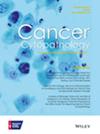Retrospective analysis of HPV infection: Cotesting and HPV genotyping in cervical cancer screening within a large academic health care system
Abstract
Background
In 2019, the American Society for Colposcopy and Cervical Pathology introduced fundamental shifts toward “risk-based” guidelines, with human papillomavirus (HPV) genotyping as a principal test for investigating squamous intraepithelial lesions. This study aims to provide practice-based evidence and supplement the updated guidelines by investigating HPV demographic distribution and uncovering the pathological features of high-grade squamous intraepithelial lesions (HSILs) caused by high-risk HPV (hrHPV) subtypes.
Methods
Patients who underwent Papanicolaou screening and HPV testing in two hospital systems over the course of 4 years were recruited. The cytology results were categorized on the basis of the 2014 Bethesda classification. DNA sequences of 14 types of hrHPV were detected by Aptima test. The histological features of HSILs caused by different subtypes were compared between biopsies and excisions.
Results
A total of 63,709 cases were included. The HPV prevalence was 14.70%, predominantly in the 30 to 39-year-old age group, with slightly higher rates observed in African Americans. There was no significant racial distribution difference between HPV 16/18/45 and other types. HPV 16/18/45 infection was directly correlated with the severity of abnormal cytology, although the other subtypes were the major causes of cytological abnormalities. The trend for HPV prevalence was consistent across calendar years, and was associated with 8.77% negative for intraepithelial lesion or malignancy, 30.46% atypical squamous cell of undetermined significance, 64.62% low-grade squamous intraepithelial lesion, 66.75% atypical squamous cell-cannot exclude a high-grade squamous intraepithelial lesion, and 91.80% HSIL. Furthermore, 29.09% of HSILs associated with other subtypes were not detectable on subsequent resections.
Conclusions
Given the HPV demographic distribution and the histological features of HSILs caused by different subtypes, cotesting with reflex HPV genotyping in specific populations, or expanding the subtypes in the primary HPV screening test, should be considered.



 求助内容:
求助内容: 应助结果提醒方式:
应助结果提醒方式:


